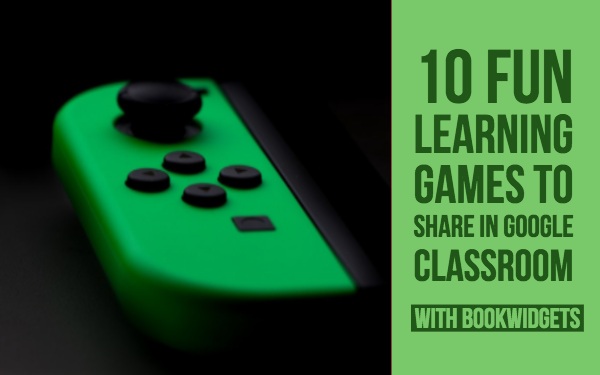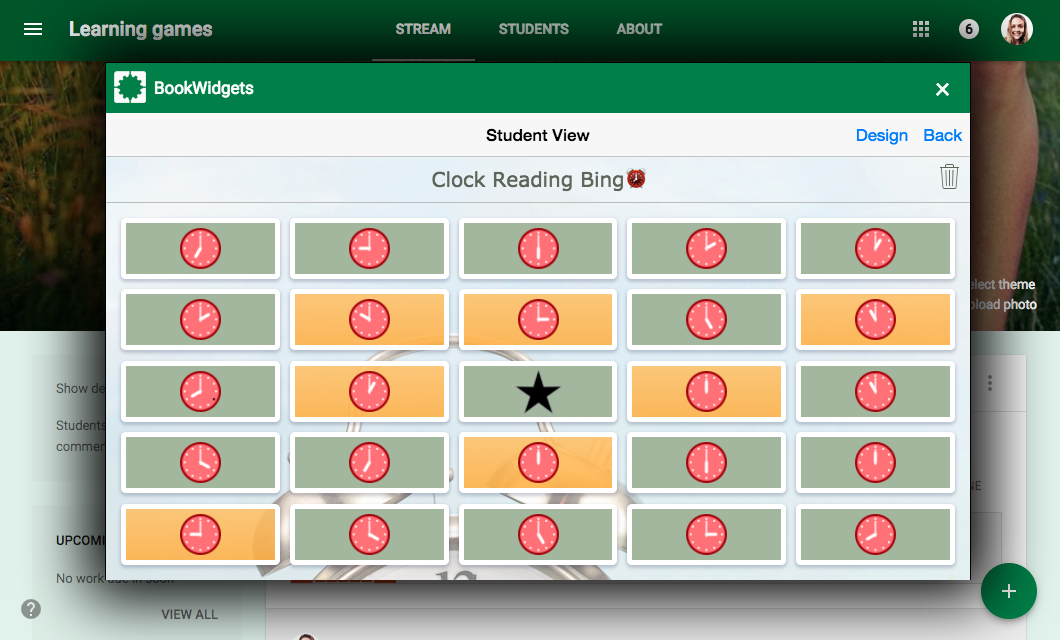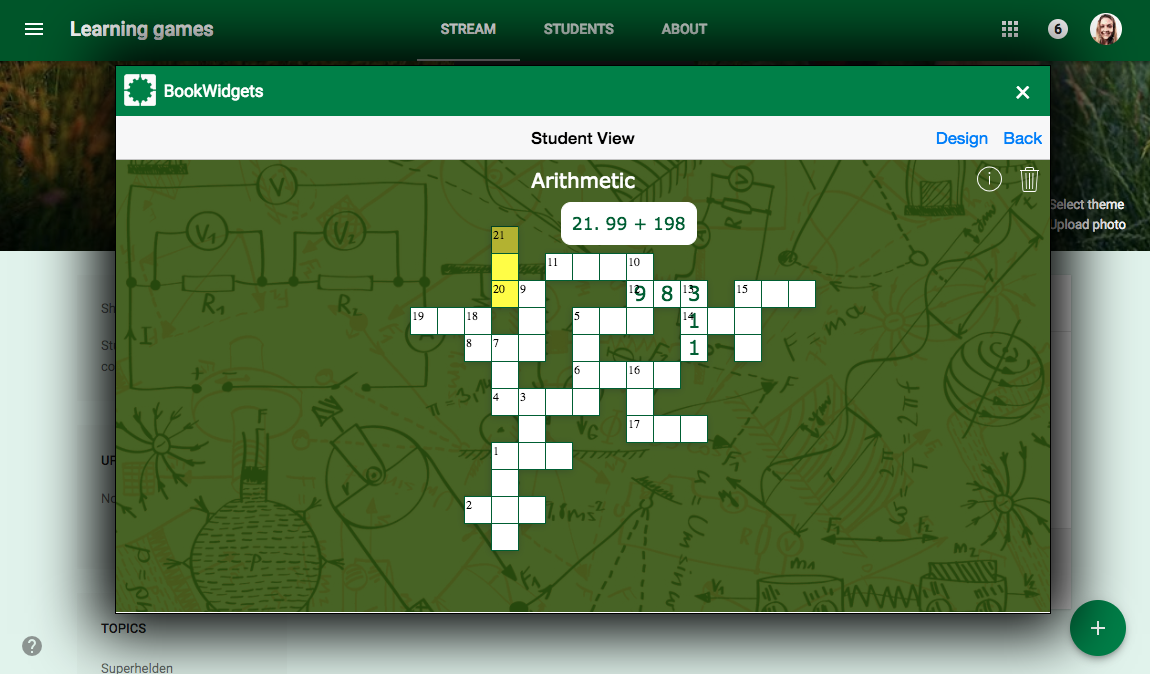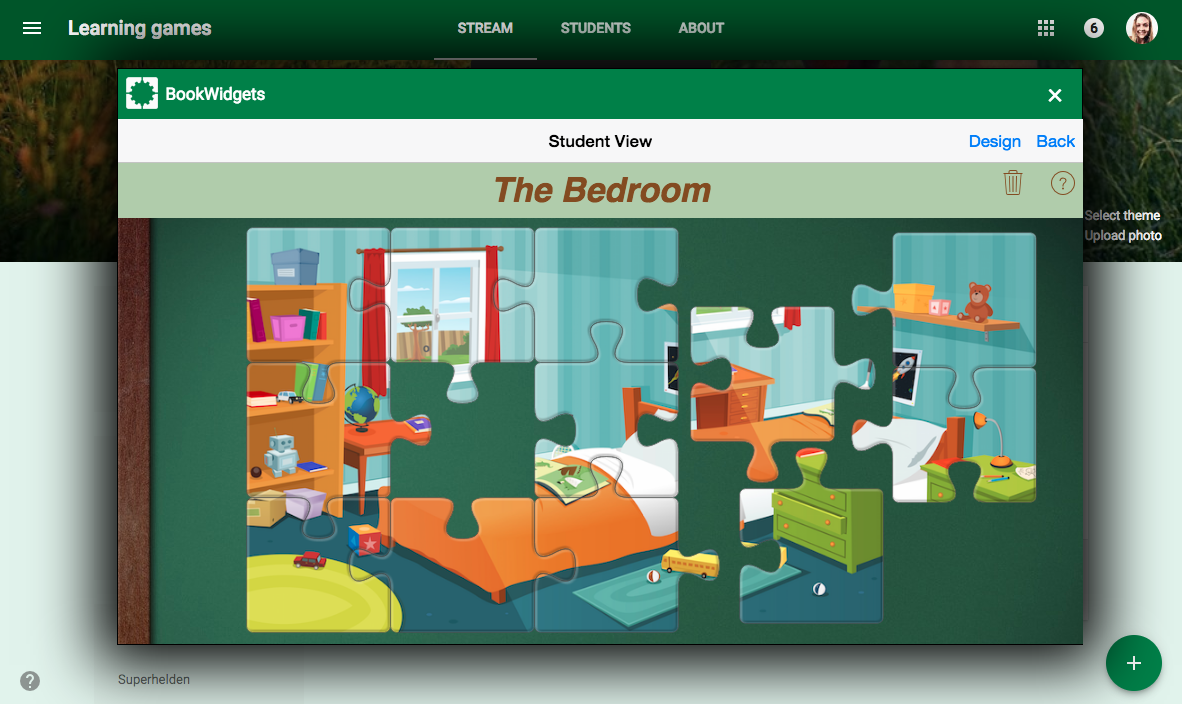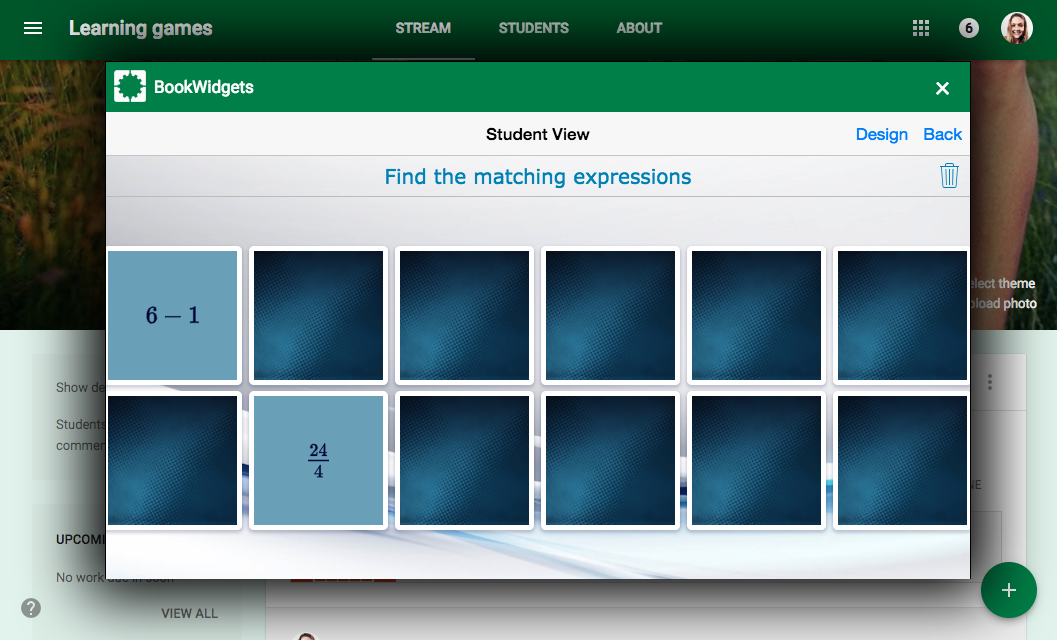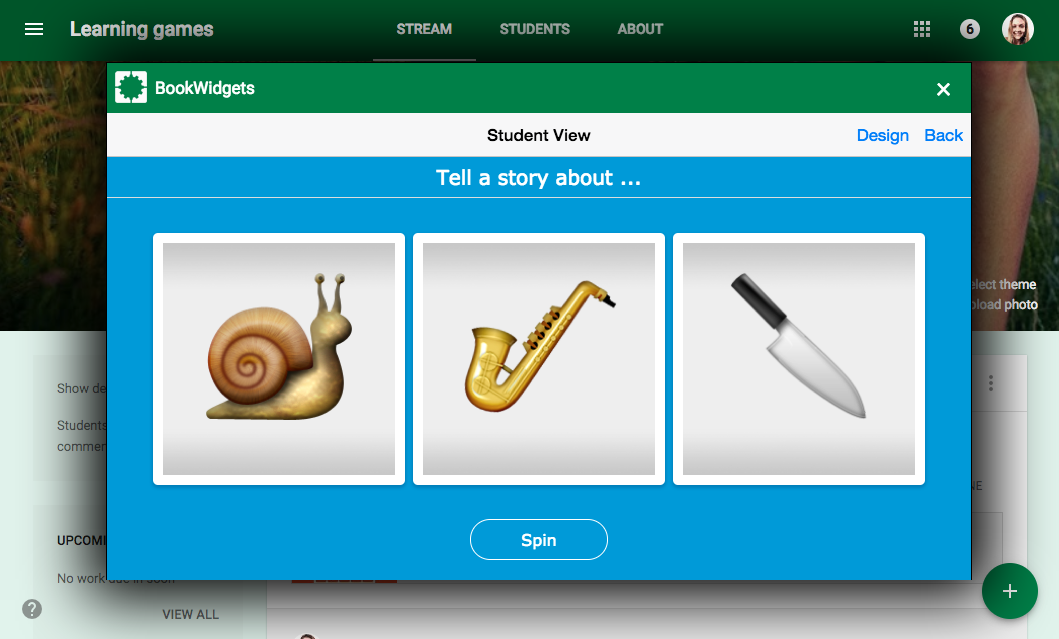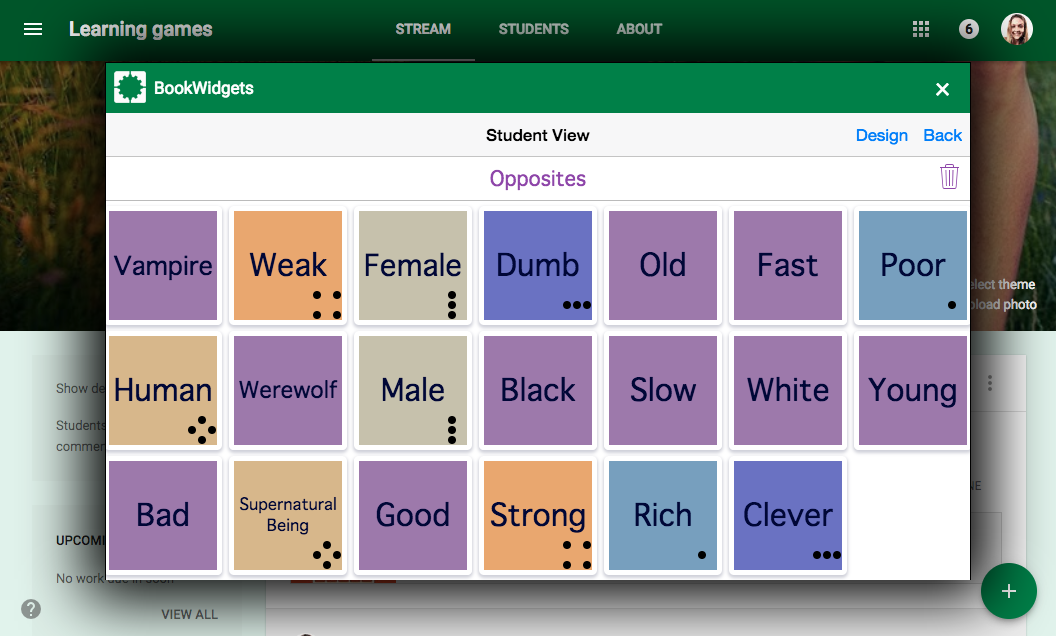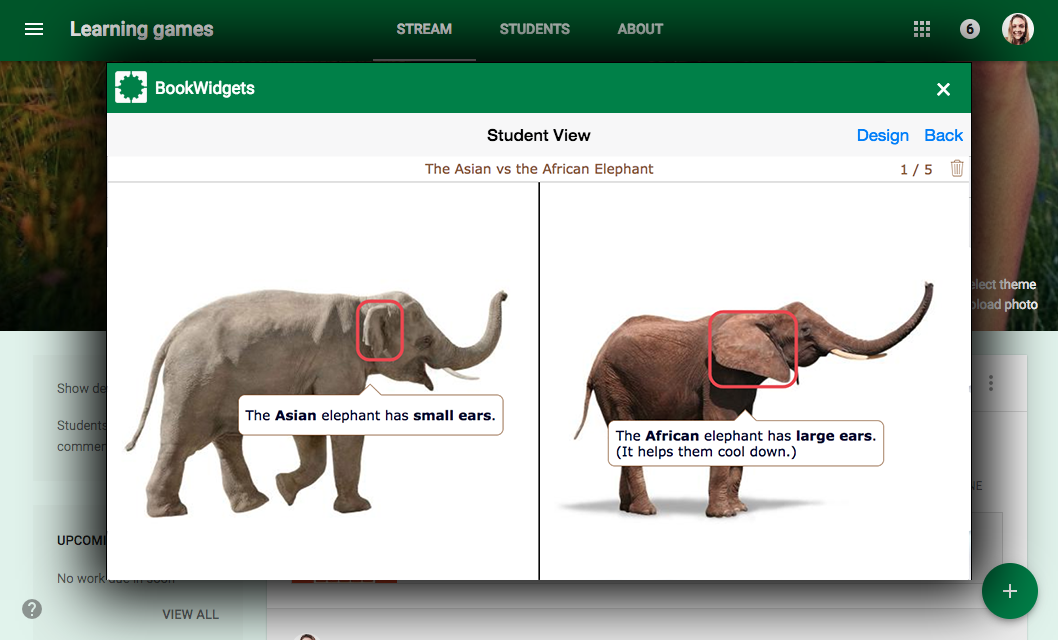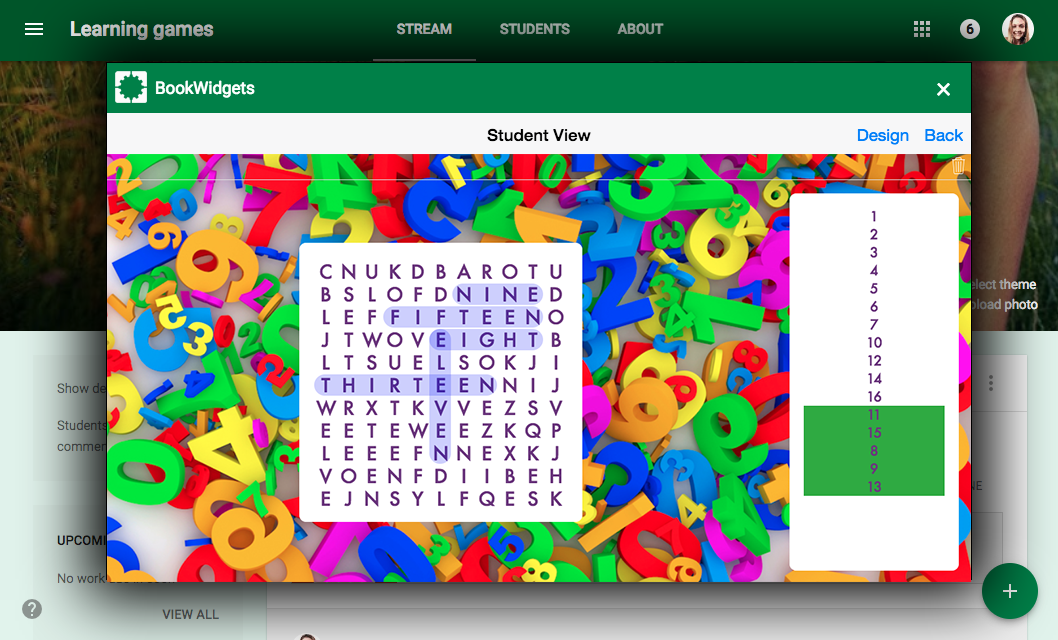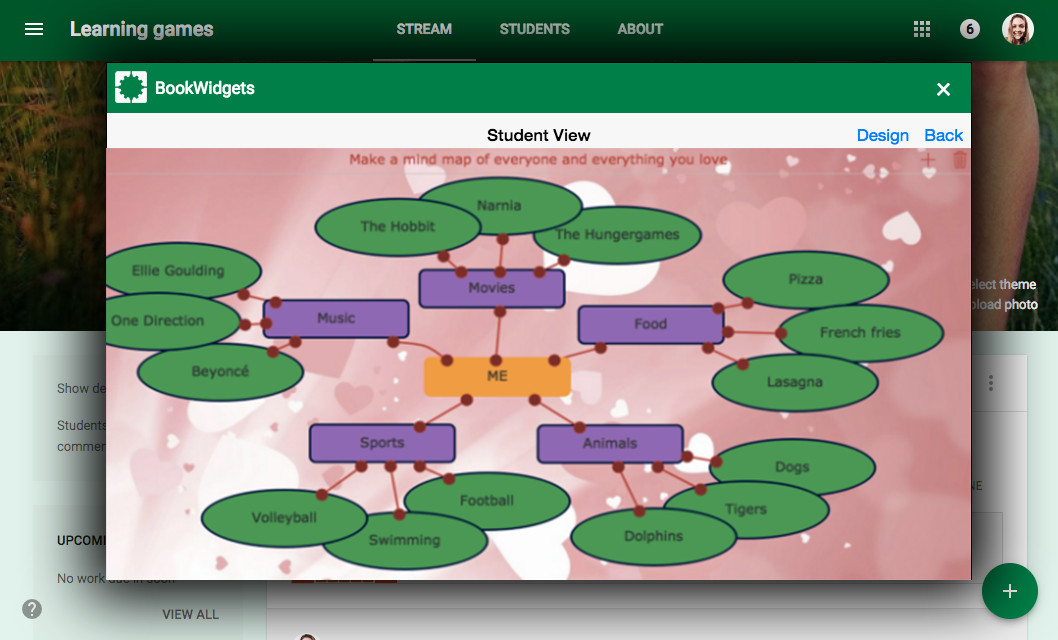Gamify your Google Classroom with these 10 fun BookWidgets learning games
 Lucie Renard —
Lucie Renard —
Before we get started, you might want to know more about the digital game activties that fit right inside Google Classroom. They are all created with BookWidgets, a content creation and evaluation tool for teachers. With BookWidgets, you can make automatically graded quizzes and interactive exercises, like the learning games below.
So, what does this have to do with Google Classroom? Well, BookWidgets has a smooth integration with Google Classroom. This means that you can create these interactive learning games right from inside your trusted Google Classroom environment. And what’s more, results of these activities (or widgets) are automatically sent to your Google Classroom for you to give feedback. You can work with the Chrome extension or enable the Bookwidgets add-on. Wondering how this exactly works? Check it out here.
In this blog post I’ll show you how to gamify your Google Classroom with some interactive learning games you can completely costumize to your lesson plan. Since gamification in education is the real thing, I’ll show you some examples and give you some extra lesson ideas as well.
10 Fun learning games to share in Google Classroom
1. Bingo
The first learning game is Bingo! Add your own images or words to the bingo widget from BookWidgets, and share the result with your students. Every student will get a different bingo sheet.
In this example the teacher calls out digital times and the students have to tick off the matching clock. When a student has ticked off 5 in a row, he has BINGO!
So, what else can you do with a bingo game in your classroom?
- Definition bingo: read out the definition of a word, and let the student find the word on the card.
- Picture vocabulary bingo: use cards with pictures of the (translated) words you’re calling out
- Minimal pairs bingo: use pairs of words that vary in a single sound (bat + but, desk + disk, fan + van, sing + thing,…) Rhyme Bingo: call out rhyme words of the words on the bingo card.
- Decimal Bingo: put decimals on the card, and either call out the numbers literally, or as fractions.
- Headshot bingo: put photos and/or names of all the students in the class on the card, and optionally complete the list with staff members, teachers, the principal,… Call out people by name, or give clues about the person you’re describing.
Take a look at this blog post for 20 more bingo examples!
2. Crossword
One of the most used learning games is the crossword puzzle. You’re probably using it the ordinary way: you give a definition and students have to find the right term. As you can see in the example, a crossword puzzle can be more than that as well!
Use crossword puzzles for:
- Science: Learning the elements of the periodic table isn’t easy. It definitely is much more fun when you put the symbols and their names in a crossword puzzle.
- Geography: Geography also has its fair share of names to remember: countries, cities, continents, mountain regions, rivers,… The fun solution: crossword puzzle!
- Languages: when you’re teaching a foreign language, translations have to made. Let your students translate the given word to the language you teach.
More lesson ideas? Check out this post about the crossword puzzle.
One more thing: the crossword puzzle has an automatic grading option. Let your students submit their completed crossword puzzle and take a look in Google Classroom!
3. Jigsaw Puzzle
Insert an image, choose how many pieces you want, and generate. That’s it! Creating a jigsaw puzzle in Google Classroom with BookWidgets is that simple!
A jigsaw puzzle is a lot of fun, but what’s the learning value in this game?
- Let your students solve geographical puzzles about a continent, a country, the world. This way, they know where everything belongs in the world.
- Let your students solve a puzzle about an image, showing a special environment or historical figure. In geography class or history class, they have to tell everything they know about the place or person on the image.
- Let students solve a jigsaw puzzle about an image. For example, an image of the bedroom. Students have to translate everything they see on the image to a foreign language. This way, they learn the vocabulary.
4. Memory
A memory game is used to train your students’ memory, and can be used to make associations. Two birds, one stone.
How are you going to use a memory game?
- When one student finds an identical pair, they tell the other student what it’s about. Students switch turns.
- When one student finds an identical pair, they tell the other student the translation. Students switch turns.
- Let students make associations. Match images with words, use synonyms and opposites, translations, arithmetics and their solution, statues with countries, etc.
Want to check how many times your students tried to complete this game? Just let them submit their work!
5. Randomness
This is probably a learning game you’ve not seen before. Add images, numbers, words or emoticons to wheels. Spin the wheels, and see what comes up.
Let your students come up with a story about some randomly given emoji’s. What a great speaking or writing exercise!
Other possibilities are:
- Let students build a correct sentence with words given by the randomness widget. For example: You - To speak - Future perfect.
- Do experiments around probabilities. Roll the dice or flip coins.
- Get to know each other. Add headshot pictures of your students in one wheel, and a topicsuch as “hobbies” about which they have to talk about in the other wheel.
- Add numbers to the wheels. Spin the wheel and let students multiply, divide, subtract or add the numbers.
6. Pair matching
This game looks a lot like “Memory”. The only difference is that students have to match pairs, without remembering their location.
Take a look at this example:
Here are some other associations you can make:
- Words and their translation
- Images and their translation
- Arithmetic and a solution
- Images of people and their names
- Images of monuments and their names/places
- Words and their definitions
- Etc.
Here, just like with the memory game, you can also see how many times students tried to match pairs. This way you know if students didn’t just guess the pairs.
7. Spot the difference
In education, a lot of things are compared to each other. It’s important for students to know the differences. This learning game is exactly what you need.
Take a look at this example. Do you know the differences between them?
Here’s some extra inspiration: You could put together two images about ancient building styles and ask students to explain the differences. And what about the differences between plants, animals, vegetations, regions, ancient cultures, empires, warriors, gods, … You name it!
8. Hangman
You all know the fun game hangman. It’s often used as an energizer or as lesson filler. But it can have an educational value as well.
Use a hangman game:
- to introduce yourself as a teacher. What are your hobbies/ favorite food? Let the students guess.
- to introduce a new theme or topic
- to let student spell difficult words correctly
- to summarize a topic or story in a few words. Those words are important keywords that students have to guess
Can you guess my favorite food?
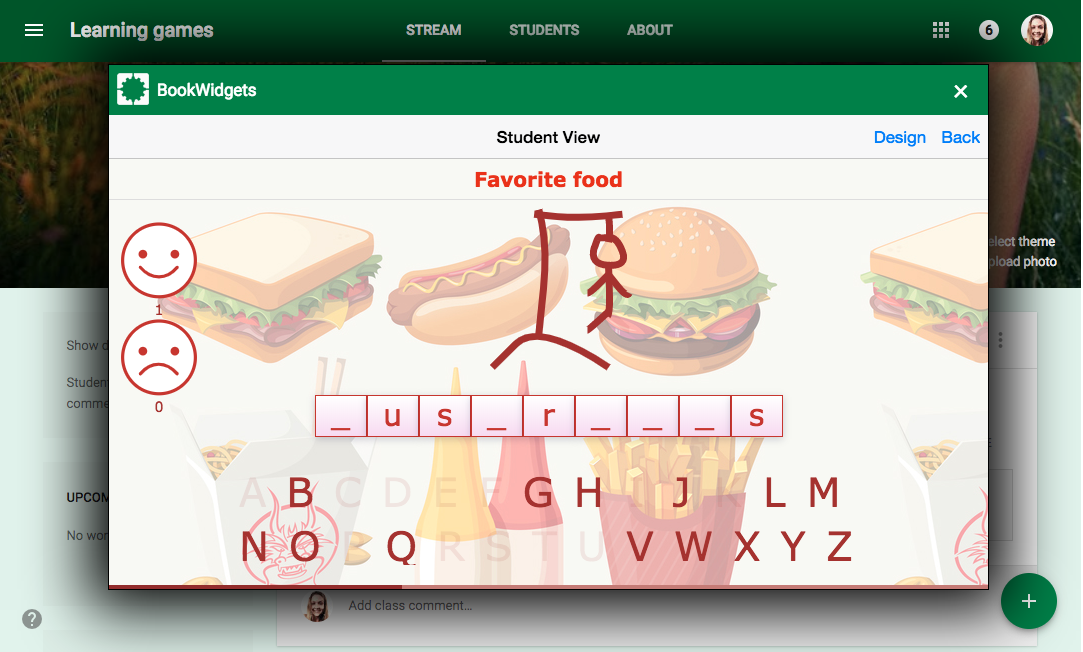
9. Word Search
This one is a tricky one. Some student can find words immediately, others just don’t. In most cases, students just have to find the given words. But, you can spice things up as well!
- Most science subjects come with a lot of terminology to learn. Word search puzzles are perfect for the job of introducing scientific words in an interactive way.
- How about geography? Names of continents, countries, cities, rivers, mountains, … Give the capital of a country and let students search for the right country in the word search.
- When teaching languages, students could look for the translation of the given word.
- For the little ones, students could look up the spelled number, so they know how to write a number.
Want to know how many words students found? Just let your students return their work to you and find out.
10. Mind map
A mind map is mostly used to brainstorm on projects or to recall learning material.
You can also use a mind map:
- to structure a concept
- to summarize a theme/topic
- to map ideas
- to ask questions around a topic
- to introduce yourself
Here, students can send their mind map back to the teacher as well!
Would you like to see additional ready-to-use lesson activities for inspiration? Check this out!
Your turn
That’s it, you’re ready to engage your students with these easy-to-make learning game templates.
Share your digital assignments in our Teaching with BookWidgets Facebook group and follow us on Twitter to stay tuned for new blog posts with inspiration. Don’t forget to install the BookWidgets Plugin first! Have a look at this blog post if you need more help setting up BookWidgets.
Would you like more explanation to help you get started? Check out this tutorial, where they explain how to create BookWidgets exercises in Google Classroom.

